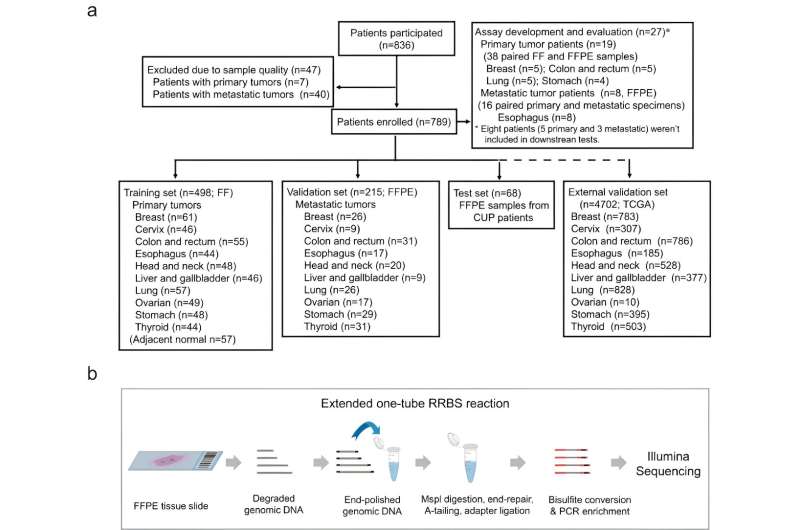This article has been reviewed according to Science X's editorial process and policies. Editors have highlighted the following attributes while ensuring the content's credibility:
fact-checked
peer-reviewed publication
trusted source
proofread
Novel method unveils cancer origins: DNA methylation profiling reveals primary sites of metastatic cancers

In a Nature Communications study, Professor Gu Hongcang and his team from Hefei Institutes of Physical Science (HFIPS) of Chinese Academy of Sciences (CAS), introduced an innovative method called BEta value-based LInear support VEctor (BELIVE) for tracing the origin of cancer of unknown primary sites (CUP).
Traditionally, immunohistochemistry (IHC) has been used as the "gold standard" for identifying the primary site of cancer. However, this test is only successful in 50%–65% of CUP patients. In order to improve accuracy, the research team focused on DNA methylation, which exhibits tissue specificity and can serve as a molecular marker for identifying the tissue of origin.
The team utilized a technique called Reduced Representation Bisulfite Sequencing (RRBS) to profile DNA methylation. They developed a novel approach using formalin-fixed, paraffin-embedded (FFPE) samples, allowing them to work with highly degraded DNA at a nanogram level. RRBS sequencing was performed on fresh frozen samples from 10 common tumor types, and the resulting data was used to generate a prediction algorithm.
Researchers constructed 28 classifiers using four different methylation assessment methods and seven machine learning techniques. Among these, the BELIVE classifier based on average methylation performed best achieved an impressive overall accuracy (AUC) of 0.95 during the interim validation phase. An independent metastasis validation set of libraries (n=215) was also constructed using FFPE tissue samples from metastatic cancer cases, further validating the accuracy of BELIVE, which achieved a prediction accuracy of 81%.
In a prospective study, the team evaluated FFPE samples from 68 CUP patients and achieved a remarkable sensitivity rate of 81% in the top-1 category. When considering top-3 predictions, the sensitivity reached an impressive 93%.
The BELIVE method is a highly effective tool for identifying the tissue of origin in metastatic cancer and CUP patients. Future prospects for its clinical utility include the incorporation of additional cancer types into the classifier, a development that is currently undergoing extensive evaluation.
"This research promises to significantly improve our ability to diagnose and treat cancers with unknown primary sites, ultimately improving patient outcomes," said Prof. Gu.
More information: Shirong Zhang et al, DNA methylation profiling to determine the primary sites of metastatic cancers using formalin-fixed paraffin-embedded tissues, Nature Communications (2023). DOI: 10.1038/s41467-023-41015-0



















